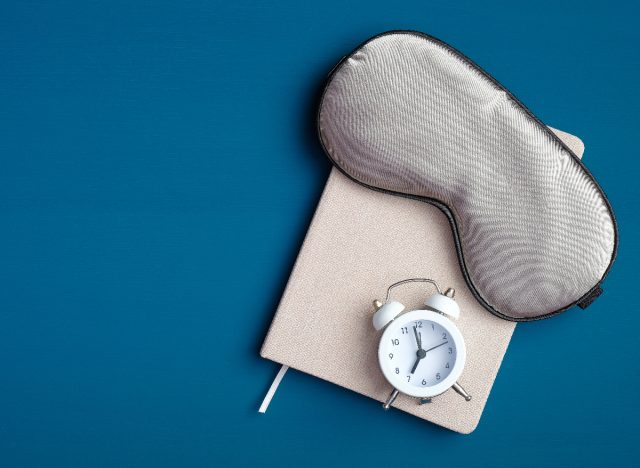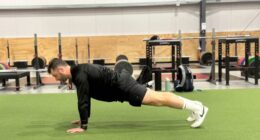Are you a runner trying to lose weight but not achieving your desired results? If so, you’ve come to the right place. We chatted with Rachel MacPherson, CPT, an ACE-certified personal trainer with Garage Gym Reviews, who shares her expert wisdom, revealing 10 effective ways to maximize your running workout for faster weight loss.
Whether you’re an experienced runner or lacing up running shoes for the first time, the benefits of optimizing your fitness routine can’t be overstated. According to research, running is one of the best exercises to burn calories, boost cardiovascular health, and reduce chronic disease risk. Beyond the weight-loss benefits of running, another study published in the International Journal of Environmental Research and Public Health concluded that running can improve mental health and mood while combating depression and anxiety.
However, understanding how to enhance your running workout involves more than just increasing your distance or speed. It’s about making minor adjustments that can lead to mega-improvements in your health and fitness over time. When done correctly, these adjustments can help you burn more calories, build lean muscle, and boost your metabolism, resulting in a healthier, slimmer you.
Read on for the 10 best ways to maximize your running workout for rapid weight loss, according to MacPherson.
Incorporate interval training.

Alternating between high-intensity sprints and moderate jogging can significantly boost your calorie burn in a shorter timeframe.
“Adding higher intensity intervals to your runs will help you burn more calories due to expending more effort in a shorter period,” MacPherson explains. “Plus, you’ll challenge yourself and push your cardiovascular system so that you can handle more effort and improve your fitness, which in turn will lead to more effective weight loss workouts.”
Run on different terrains.

Mixing up your routes with hills, trails, and flat surfaces can help engage different muscle groups and increase the number of calories you burn running. Additionally, a 2023 study found that running on varied terrains (e.g., trail running) can boost aerobic fitness, increasing your calorie-torching potential.
MacPherson says, “Running on an incline burns more calories than running on flat ground, and the same is true with more challenging terrains that require more muscular recruitment.”
Add strength training.

According to a 2021 study, incorporating strength training exercises can help you incinerate calories and maintain muscle mass while shedding weight.
“Integrate bodyweight exercises like squats and lunges to build muscle and boost metabolism,” MacPherson advises. “You can also alternate between running and strength training to support muscle mass, which prevents your metabolism from adapting. Excessive cardio alone can lead to muscle loss, but incorporating strength training helps maintain muscle, prevent injuries, and keep your metabolism active.”
Monitor your heart rate.

Using a heart rate monitor ensures you’re working within a challenging enough zone during your runs to safely push yourself to your limits and optimize calorie burn.
“When using a heart rate monitor, you don’t have to worry about staying in the fat-burning zone, which isn’t going to make a big overall difference to your results,” says MacPherson. “However, you can aim to work within different heart rate zones for each training session, performing some easier days and some more intense running days.”
Stay consistent.

Like any other health or fitness goal, consistency is essential for achieving weight-loss success with running workouts. Additionally, research shows that regular running benefits cardiovascular, metabolic, and cognitive health. It also reduces body fat percentage, increases fat-free mass, and boosts muscle mass.
“Make sure to set up a consistent running routine to keep your progress going and see continuous improvement,” says MacPherson. “It’s also a good idea to track your workouts and plan for them ahead of time, booking them off in your calendar as important dates with yourself so you can be sure they are prioritized.”
Hydrate properly.

If you aim to boost performance and sustain energy levels while running, staying adequately hydrated by consuming water and electrolytes before, during, and after your runs is essential.
“Consider consuming electrolytes if you’ll be running for 40 minutes or longer, sweating a lot, or if it’s hot and humid. Being properly hydrated will help you keep pushing and go for longer, making your workouts more efficient and burning more calories to support weight loss,” explains MacPherson.
Nourish your body.

Eating a balanced diet rich in protein, healthy fats, and complex carbs is critical for running performance and recovery. Additionally, consuming a healthy, anti-inflammatory diet allows you to recover faster and get out for that next run sooner.
“Fueling your body properly will keep you running longer and harder to burn more calories,” says MacPherson. “A well-balanced diet will also aid in recovery so that you can work out consistently at a better performance level rather than burning out and skipping workouts.”
Get enough sleep.

It’s no secret that adequate sleep is essential for recovery and peak performance. The National Institutes of Health says getting enough sleep is associated with reduced calorie intake, a prerequisite for weight loss.
MacPherson says, “Ensure you’re getting seven to nine hours of sleep per night to allow your body to recover and perform at its best. Sleep is paramount to performance and burning more calories, so prioritize sleep above all else.”
Wear a weighted vest.

Wearing a weighted vest adds resistance to your runs, helping you torch calories and shrink your waistline. Research shows that wearing weighted vests regularly can help those who are overweight or obese lose weight. Additionally, MacPherson tells us this simple addition can help you build strength and endurance, making your workouts more efficient.
Listen to your body.

Pay attention to signs of overtraining and take rest days to prevent injury and burnout. Recovery is just as important as exercise, so make sure you can stay consistent with it and avoid exhaustion, potentially causing you to skip future workouts.
“One of the biggest setbacks I often see is not recovering enough and then losing steam,” says MacPherson. “Missed workouts will not get you toward your goal, so it’s crucial to take things at a pace that will allow for consistency and avoid overtraining and burnout.”







